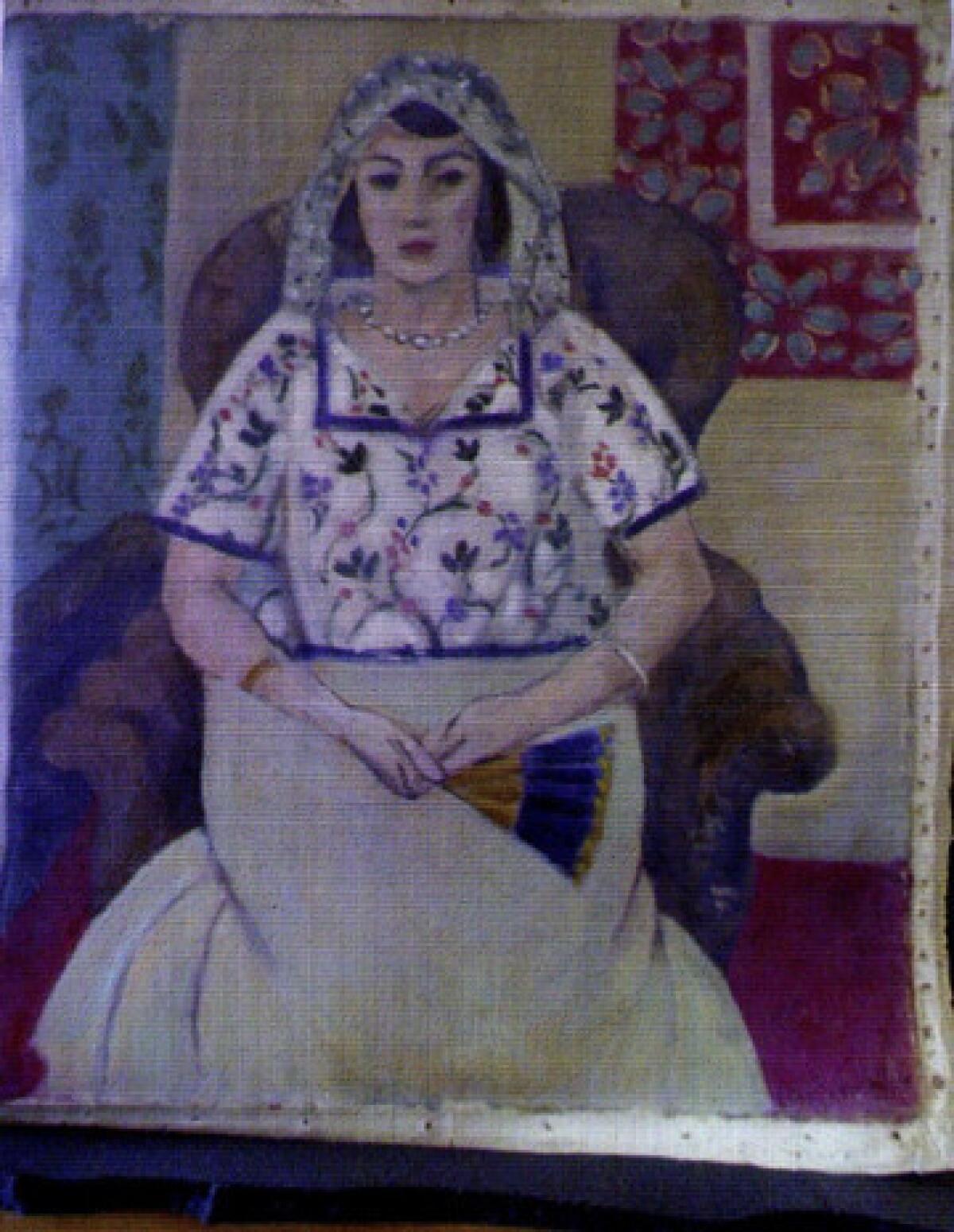Son of Nazis’ art dealer wants to return works to owners’ heirs

- Share via
The son of infamous German art dealer Hildebrand Gurlitt, who helped Adolf Hitler hoard art looted from Jews during the Holocaust, says he’s now willing to return works his father had acquired to the heirs of their victimized owners.
Attorney Christoph Edel, a court-appointed legal guardian for the 81-year-old Cornelius Gurlitt, issued a statement on Gurlitt’s website this week saying that Gurlitt has told him, “if the works…should be justifiably suspected of being Nazi-looted art, please give them back to their Jewish owners.” Added Edel: “Let there be no doubt that we will comply with the instructions of our client.”
It’s a stronger commitment than Gurlitt previously had made. An informational website set up last month by his representatives at first said he was willing to reach “fair and equitable solutions” with heirs who could produce proof of looting.
ART: Can you guess the high price?
Edel said that one work from the trove German authorities seized from Gurlitt in 2012 is about to be returned, and that “discussions with other claimants have been constructive as well, and we expect to return additional works in the coming weeks.”
News reports from Europe said that Henri Matisse’s painting “Sitting Woman” will be returned to the heirs of Paul Rosenberg, a prominent French Jewish art dealer.
German authorities raided Gurlitt’s home near Munich in 2012, seizing nearly 1,300 artworks in what was later said to be an investigation of possible tax evasion.
Germany came under withering international criticism for keeping the seizure a secret for more than a year, until news reports broke the story last fall. The outcry led to the appointment of a government-authorized task force to study the Gurlitt trove and its ownership history.
It has identified 458 pieces as possibly stolen from Jews, and an additional 380 as so-called “degenerate art” that the Nazis ordered removed from German museums and sold because they were deemed to reflect a Jewish or Communist influence, or otherwise failed to meet the Third Reich’s aesthetic ideals.
GRAPHIC: Highest-earning art executives
The debate in Germany has concerned not just whether authorities who kept the art seizure secret failed to act responsibly to families from whom works might have been looted, but whether they had legal grounds for taking them from Gurlitt in an investigation that has not yielded any criminal charges so far.
The Gurlitt website revealed this week that he has 238 additional pieces, not involved in the Munich seizure, that were kept at a separate home in Salzburg, Austria, and are now under Edel’s control.
Most are said to be drawings by Pablo Picasso and Edvard Munch, but also include paintings and watercolors by a galaxy of European art stars, among them Picasso, Claude Monet, Edouard Manet, Camille Pissarro, Paul Gauguin and Henri de Toulouse-Lautrec.
The Gurlitt case has prompted German officials to re-examine property laws that make Germany hostile ground for Holocaust art-restitution claims against private owners such as Gurlitt.
One proposal would amend a provision in the German legal code that says a victim of a theft, or the victim’s heirs, have no right to reclaim a piece of stolen property from someone who’s possessed it for at least 30 years -- as is the case with Gurlitt.
PHOTOS: Arts and culture in pictures by The Times
Gurlitt’s apparent new willingness to return looted art is “a step in the right direction for him,” Washington, D.C., attorney August Matteis Jr. said Thursday. But Matteis said Gurlitt still has no bearing on the case he filed this month in a U.S. federal court that aims to force German authorities to return a painting by Max Liebermann that was part of the Munich seizure.
He’s representing David Toren, a Holocaust survivor living in New York City who says he has ample proof that the painting was in the collection of his great uncle, David Friedmann, a German Jewish businessman who was killed by the Nazis along with others in the family after they’d confiscated his art.
Matteis said that Gurlitt isn’t relevant to the case because the painting, “Two Riders on the Beach,” is now in German authorities’ hands, and Toren is claiming it from them under provisions of U.S. law that allow for property claims against foreign governments to be brought in American federal courts.
ALSO:
Hoarder of suspected Nazi-looted art: `I won’t give back anything’
Holocaust survivor sues Germany in claim to a work in Nazi art trove
Cornelius Gurlitt, owner of suspected Nazi art stash, launches website
<meta property=”og:image” content=”https://www.trbimg.com/img-533591c4/turbine/la-et-sitting-woman-for-facebook-20140328/600” />
More to Read
The biggest entertainment stories
Get our big stories about Hollywood, film, television, music, arts, culture and more right in your inbox as soon as they publish.
You may occasionally receive promotional content from the Los Angeles Times.










